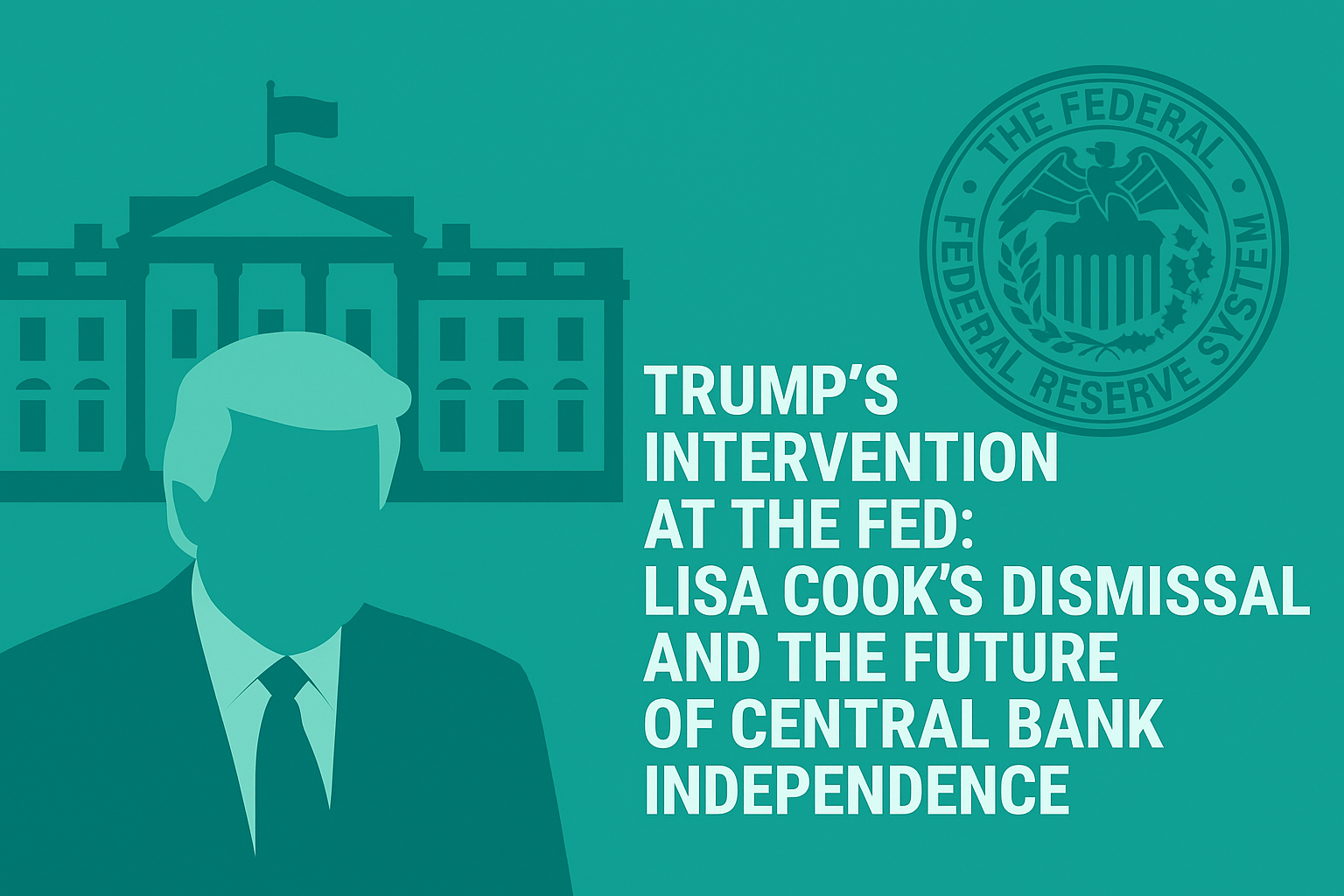Executive Summary
The dismissal of Federal Reserve Governor Lisa D. Cook by President Trump has triggered a legal and political storm. The case has become a focal point in the broader debate over central bank independence, the scope of presidential authority, and the stability of U.S. monetary policy. While the White House argues that Cook engaged in financial disclosure irregularities, she maintains the dismissal was politically motivated. The outcome of this legal battle, combined with the pending confirmation of Trump’s nominee Stephen Miran, could reshape the Fed’s balance of power just weeks before a crucial FOMC meeting.
1. Timeline of Events
- Late August 2025 – President Trump announced his intention to remove Governor Lisa Cook, citing irregularities in past mortgage disclosures.
- August 28 – Cook filed a lawsuit seeking to block her dismissal, arguing that it violated statutory safeguards protecting Fed governors.
- August 30 – A federal district court held a preliminary hearing and deferred judgment, leaving her status in limbo.
- September 4 (scheduled) – Senate Banking Committee will hold confirmation hearings for Trump’s nominee Stephen Miran, who is seen as aligned with the administration’s low-rate stance.
- September 16–17 – The Federal Open Market Committee (FOMC) meets, with uncertainty over whether Cook retains voting rights.
2. Legal and Institutional Framework
- Federal Reserve Act grants governors 14-year terms and restricts removal to cases “for cause.” Traditionally, this has been interpreted narrowly—serious misconduct or incapacity, not mere policy disagreement.
- White House Argument: Trump’s team claims Cook’s alleged false statements on mortgage documents constitute “cause” for dismissal.
- Cook’s Counter: She argues these claims are tenuous, unrelated to her official duties, and serve as a pretext for removing a policymaker who resisted White House pressure.
- Institutional Significance: The long tenure and limited removal clause are meant to insulate the Fed from political cycles. If Trump’s interpretation prevails, it could weaken this safeguard permanently.
3. Political and Market Implications
- Board Dynamics: If Cook is removed and Miran is swiftly confirmed, Trump-friendly appointees could shift the voting balance on the Fed’s Board of Governors.
- Policy Direction: Miran has been publicly supportive of lower interest rates and stronger presidential influence over the Fed. This raises concerns about premature easing and diminished independence.
- Market Reaction: Investors remain cautious. While immediate market disruption has been limited, the episode adds a risk premium to U.S. long-term yields and dollar stability. The perception of politicized monetary policy could heighten volatility around the September FOMC.
4. Why the Intervention Matters
- Threat to Central Bank Independence – Allowing presidents to remove governors for political reasons undermines the Fed’s credibility.
- Precedent Setting – A successful dismissal on weak grounds could embolden future administrations to reshape the Fed to suit political goals.
- Governance Risks – A prolonged legal battle leaves uncertainty over board composition, complicating decision-making at a time of sensitive monetary adjustments.
5. Scenarios Ahead
- Best Case: Courts grant Cook temporary reinstatement; Miran’s confirmation proceeds at a normal pace; FOMC operates with procedural stability.
- Base Case: Litigation drags on, Cook remains sidelined, Miran confirmed quickly; Fed policy continues but under a cloud of politicization.
- Worst Case: Courts uphold Trump’s broad dismissal powers, leading to a structural erosion of Fed independence, market distrust, and heightened volatility in U.S. Treasuries and FX markets.
6. Implications for Global Investors and Policymakers
- Monitor court rulings on Cook’s reinstatement, as they will define the limits of presidential authority.
- Watch Miran’s confirmation process closely for signals on the future direction of Fed policy.
- Expect heightened uncertainty in September’s FOMC meeting and potential repricing of U.S. interest rates.
- Recognize that central bank independence—a pillar of financial stability—may now be seen as vulnerable to political intervention.
Conclusion
The Cook dismissal case is not simply a personnel dispute; it is a stress test for the institutional independence of the Federal Reserve. The legal outcome will shape how much influence future presidents can wield over monetary policy. For markets, the episode underscores the importance of governance credibility in sustaining confidence in the U.S. dollar and Treasury markets.


